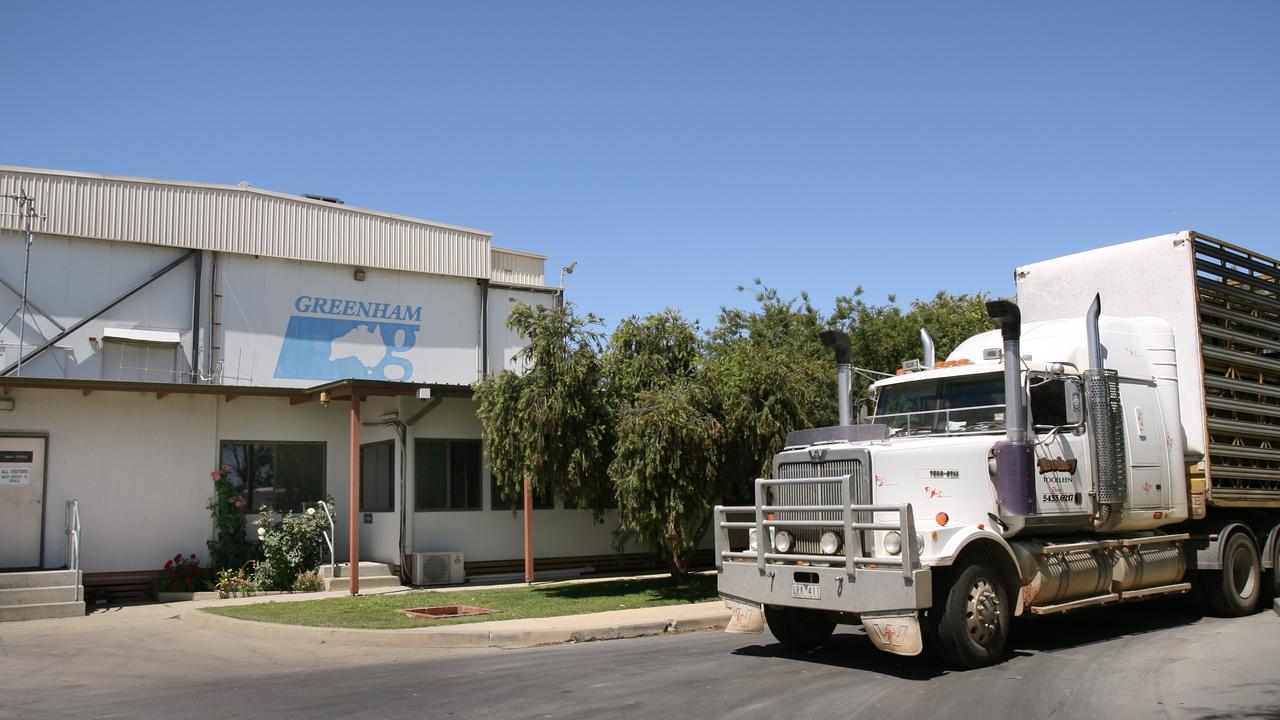Top 10 cattle, sheep farming highlights of 2020
When it comes to livestock, 2020 was an extraordinary year — for all the right reasons. We look at 10 of the year’s most exciting sales and record-breakers for beef and sheep.
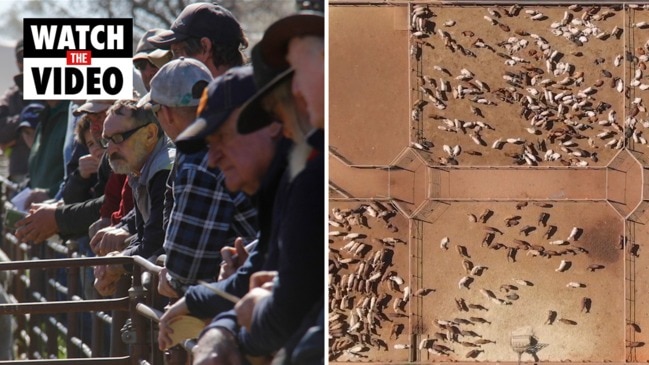
IT HAS been a year like no other for Australia’s livestock producers.
Records have been broken only to smashed up and rewritten again.
When coronavirus arrived, the industry was nervous about what would happen if processors closed. Those concerns were justified when outbreaks hit – including at one of Australia’s largest, JBS Australia’s Brooklyn plant in July.
But, the processing sector’s rapid response, government restrictions and tracing systems quickly stemmed the outbreaks and plants reopened with minimal price disruption.
Later in the year trade disruptions with the crucial Chinese market undoubtably damaged returns to producers. China is integral to the fortunes of Australia’s red meat sector, being the largest market for lamb and mutton exports in 2019 and number two for beef.
Yet, looking at the returns still being pocketed by producers deep into this year, the impact of the bans has been softened by the export market diversification which the red meat industry has invested in.
Even as summer unfolds, cattle breeders have never seen prices so good; and by and large, they are holding their ground at record rates.
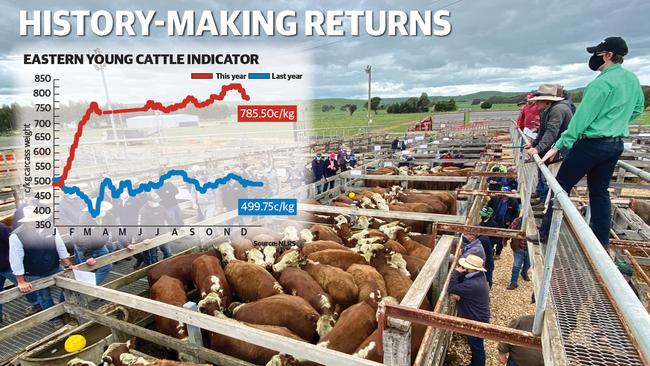
In southern Australia, that record run has been capped off by a spring growing season out of the box, pumping paddocks flush with feed.
The prices hikes have been attributed to the low herd and flock numbers, restocking after droughts – particularly in Northern Australia – and the global protein deficit caused by African Swine Fever.
Western District stud principal Stephen Branson, of Banquet Angus, says the prices are the best he has seen it in his 40-plus years in the industry.
“I tell my kids, just enjoy it because we may never see prices like this again,” he said.
The Branson family’s spring sale produced an average price of $15,354. That’s per bull.
In 2019, Banquet’s spring bulls sold for, on average, $6904.
And they weren’t alone, with many cattle stud recording averages up by more than $6000 this year.
But as to how much longer the dizzying prices – now the world’s dearest on beef – can last, the Mortlake breeder reckons for them to continue like they have in the past few months would be “to defy gravity”.
“But even if they come off a bit in the coming weaner sales, prices are still just extraordinary,” he said.
“It is sexy to be a cattle producer again.
“I used to try to kick the shit off my boots when I went to Melbourne because you were almost embarrassed to be in agriculture.
“But now, I get the work boots out and off I go; farming is sexy again.”
We look at 10 of the most exciting sales and record-breakers for beef and sheep in 2020:
1 – A record EYCI paints a picture
The graph says it all. The Eastern Young Cattle Indicator is the key figure that producers, lotfeeders and processors look to for a gauge on where saleyard prices for young stock – to buy to grow out for feedlots, finish on grass or breed from – are heading.
The EYCI’s climb began in February and March, hitting 750c/kg, then drew breath for a couple of months as the coronavirus pandemic shook the nation’s confidence, but continued on its trajectory through July and to early November, hitting 829c/kg.
And the reason? Just add water. As rain gauges lapped up the widespread drought-busting rain from northern Queensland all the way down to Victoria, tight cattle supplies combined changed the market conditions almost overnight.
That magical stuff that drives grass growth had producers back to the saleyards, or, to their computer screens, ready to throw their bids in.
Now, in December, it is hovering close to 800c/kg; which is still a mammoth 300c above where it was at this time last year.
In recent weeks the EYCI has begun to ease with all eyes now on Queensland and whether forecast monsoon seasonal downpours will be delivered.
MORE: BUYERS SHY AWAY FROM PAYING TOP DOLLAR
2 – Bull prices skyrocket
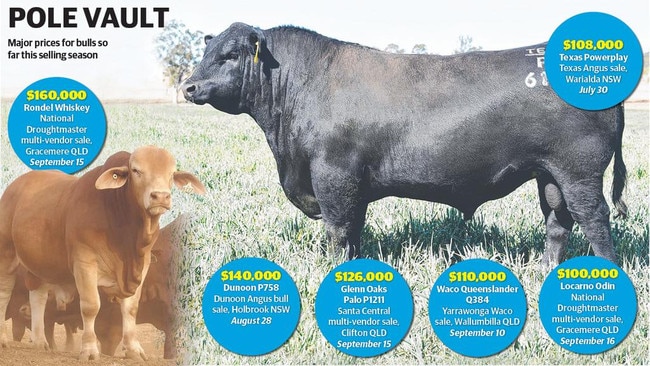
This spring has been unprecedented for bull prices, averages and clearances throughout eastern Australia and across all breeds.
Two-thirds of Victorian bull sales saw their average prices lift by $1000 or more this year.
Topping the black breed, NSW stud Dunoon Angus sold 115 sires at Holbrook for an average of $12,434 and a top of $140,000.
But this wasn’t the only extreme average price paid. Millah Murrah Angus sold 78 bulls for an average of $20,384. And Rennylea Angus recorded a staggering $12,509 across 157 bulls, and the list goes on.
Auctioneer Michael Glasser told The Weekly Times the investment in bulls showed the overall confidence in agriculture. “There’s a lot of confidence in ag full stop,” Mr Glasser said.
“People are restocking with females, commercial bulls are making very good money. We’ve probably had a couple of years since we’ve seen multiple bulls make over $100,000 and we’ve just had a year where we’ve had several bulls that are ticking all the boxes.
“We’ve certainly had bulls this year that have created the interest and people have been happy to pay and basically that is what it comes down to.”
MORE: RENNYLEA ANGUS BULL SALE RESULTS DEFY COVID-19
3 – Northern cowboys ride high
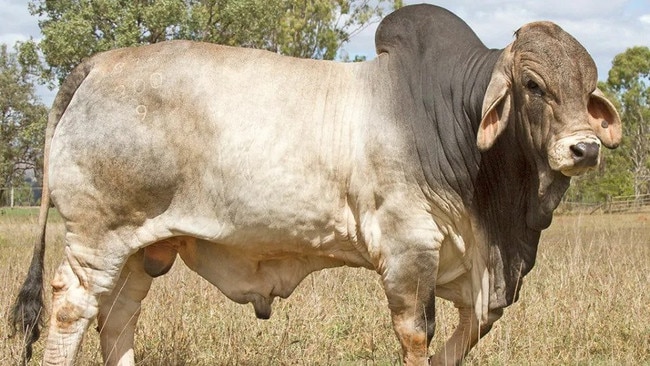
While bull sales had a fair degree of heat behind them in the south, the northern bull sales were white-hot.
In early October, Rockhampton’s Brahman Week a bull named Clukan Boabab — and looking as thick as a Boabab tree himself — drew a bid of $210,000.
The price was a record for the Brahman Week Sale, and the highest price paid nationally for a bull in 2020.
Brahman heifers also smashed national records when they sold for $3546 at Charters Towers in September, another sign that the north was rebuilding its herd. And it meant business.
MORE: HEIFER PRICES CRACK RECORDS
4 – World’s dearest beef
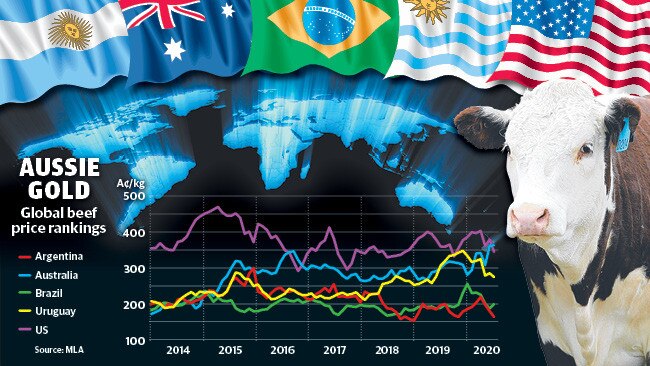
In August, it was clear Australia’s beef producers were spending money on young cattle as if they were on top of the world.
And in one sense, they were.
As the graph shows, Australia was selling beef for the highest price of any beef exporting nation, overtaking the usual market leader, the US, this season.
It is a rare occurrence, as the data that tracks the price trendline for prime slaughter steers in each country shows.
Only once in the past six years has Australia stepped ahead of the dominant US, and it was also linked to season conditions and supply.
MORE: PRICES ARE WORLD BEATERS
5 – Lamb the resilient battler
Lamb prices have held on at historically high levels, despite COVID-19 temporarily slamming the door on some sheepmeat processors such as the Australian Lamb Company at Colac.
But processors reopened and exporters continued to find buyers for the red meat, leading to a better-than-expected season for sheep and lamb producers.
The Eastern States Trade Lamb Indicator is now 770c/kg — 62c above the same time last year.
MORE: LAMB STAYS HOT AS FLOCKS BUILD
6 – Wool dips but Merinos power on
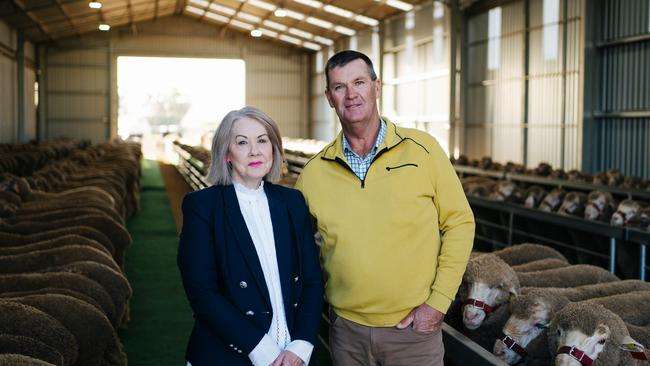
Wool was hit hard by the pandemic’s impact on the global economy and prices almost halved before rebuilding slowly towards the end of the year.
The Eastern Market Indicator is climbing back, sitting at 1198c/kg in mid December as the year’s sales wrap up. This is despite the Australia dollar’s recent rise.
In September, one of the modern Merino studs that focus on their lifetime productivity and profitability of their sheep broke national records for an on-farm sale.
Kerin Poll Merino principal Nigel Kerin sold $1.55 million worth rams of Yeoval in September and argues his sheep will stack up against any other enterprise on profit, due to the measured genetics focus on fertility and fleece weight.
“We have post-weaning weight and fleece weight data like no other stud in Australia,” he says. The record-breaking result is the highest value achieved for a single vendor on-property Merino ram sale.
And Victorian Merino stud Wallaloo Park sold a $76,000 ram in Adelaide after a collegiate effort from fellow breeders to get the ram to the sale, through COVID border closures.
MORE: VICTORIAN RAM TOPS ROYAL SALE
7 – New wave composites clock $4m sale
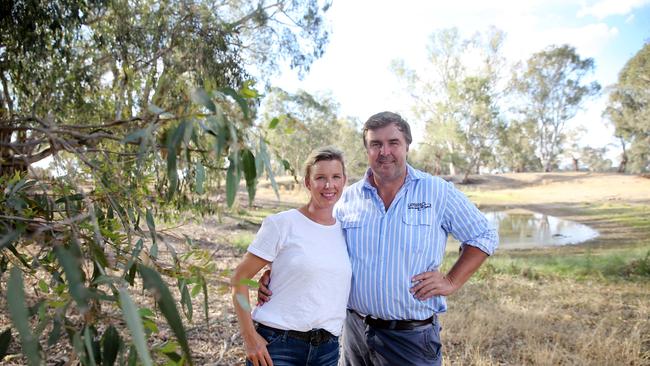
In a sign of the strength of the prime lamb market, Tom Bull of Lambpro at Holbrook recorded a record breaking. The sale was the best recorded for composite sheep in Australia and staggering for its number sold and the average price.
The Bull family sold 903 Primeline Maternal ram lambs for an average of $3913 and 304 Poll Dorset and Tradie rams at an average of $1459 for a gross of $3.977 million.
The Weekly Times Coles 2018 Farmer of the Year winner, Mr Bull says there was so much interest in the sale that buyer lists were closed before the two-day fixture.
MORE: COMPOSITES STAMP THEIR PLACE
8 – Store markets ‘unbelievable’ week after week
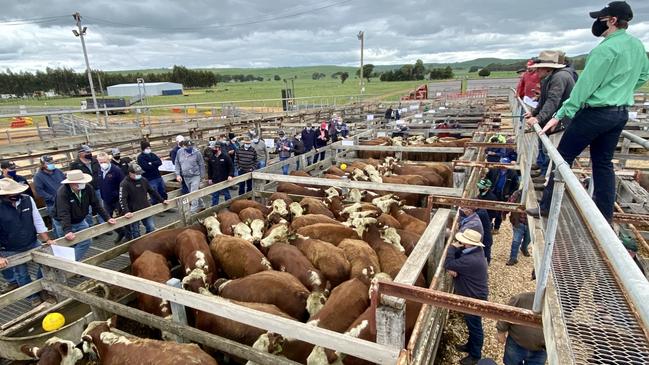
Store market returns stunned producers from Queensland into Victoria.
Many vendors told The Weekly Times they had never seen money like what they were receiving for their cattle.
We could have picked any store sale, but this one at Myrtleford, where the entire yarding averaged $1840, is a typical example.
And, a sale at Casterton in October drew as average price of 438c/kg across all steers and heifers yarded.
Analysts such as Simon Quilty describe the returns across eastern Australia as the “best seen in 50 years”.
The high prices, however, have started to cause a few headaches for buyers, concerned about the profitability of buying high priced cattle to finish.
MORE: WILL THE HIGH PRICES PAY OFF FOR FINISHERS?
9 – Store sale sheep – record first-cross prices
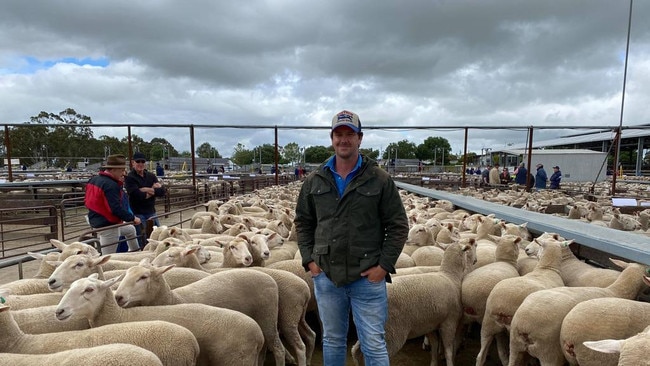
First-cross ewe prices have been climbing in recent years and the shrinking national ewe flock has tightened supplies of breeding ewes.
But, as seasonal conditions improved, sheep producers looking to build their stock numbers were forced to hand out big cash to secure breeders.
At Naracoorte prices hit a national top price of $472 joining other first-cross sales that set the benchmark for ewes at $400.
MORE: BENDIGO RECORDS COLLAPSE
10 – Swing to online selling
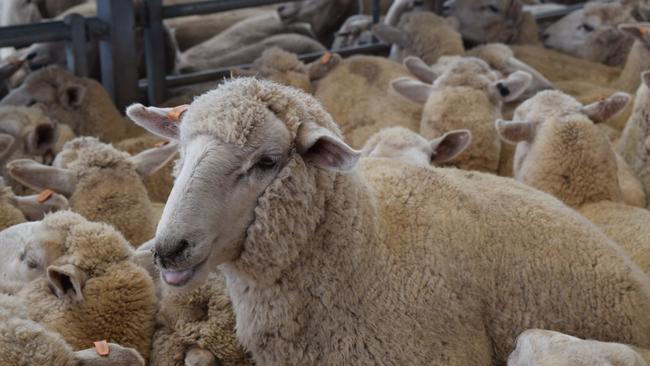
No recap of the extraordinary selling year would be complete without acknowledging the major swing towards online selling.
When COVID restrictions hit, particularly in Victoria, there was a rapid uptake in online selling, across stud and commercial sales.
And, this is where many of the records fell, including $561 paid for first-cross ewes with lambs at foot, which smashed an AuctionsPlus record last month
MORE: ONLINE AUCTION RECORD FOR EWES WITH LAMBS
Eyes forward - The outlook for summer calf sales
With thousands of weaner calves to be sold through southern Australia’s annual summer calf sales, cattle breeders will be keen to realise good money at the auctions.
For many, the coming two months are their annual pay cheque and many southern breeders have not yet tasted the high prices of 2020.
However, some have sold some weaners early, meaning numbers are likely to be reduced at some sales this year.
In response, Wodonga and Wangaratta agents have pulled all their sales into the one week, pitching them head to head with the Western District’s major fixtures.
But Mortlake agent Josh McDonald told The Weekly Times he was still confident the good season and quality of the calves would deliver good returns.
Breeder Stephen Branson said even if prices came back a little, many vendors would still be cashing in at the highest prices they had ever recorded.
“But if we see significant rain falling in Queensland soon, well that could change things up again and we could see some more astonishing things happen,” Mr Branson said.

